First look – Ferdinand Berthoud unveils a Platinum Version of the Chronomètre FB1
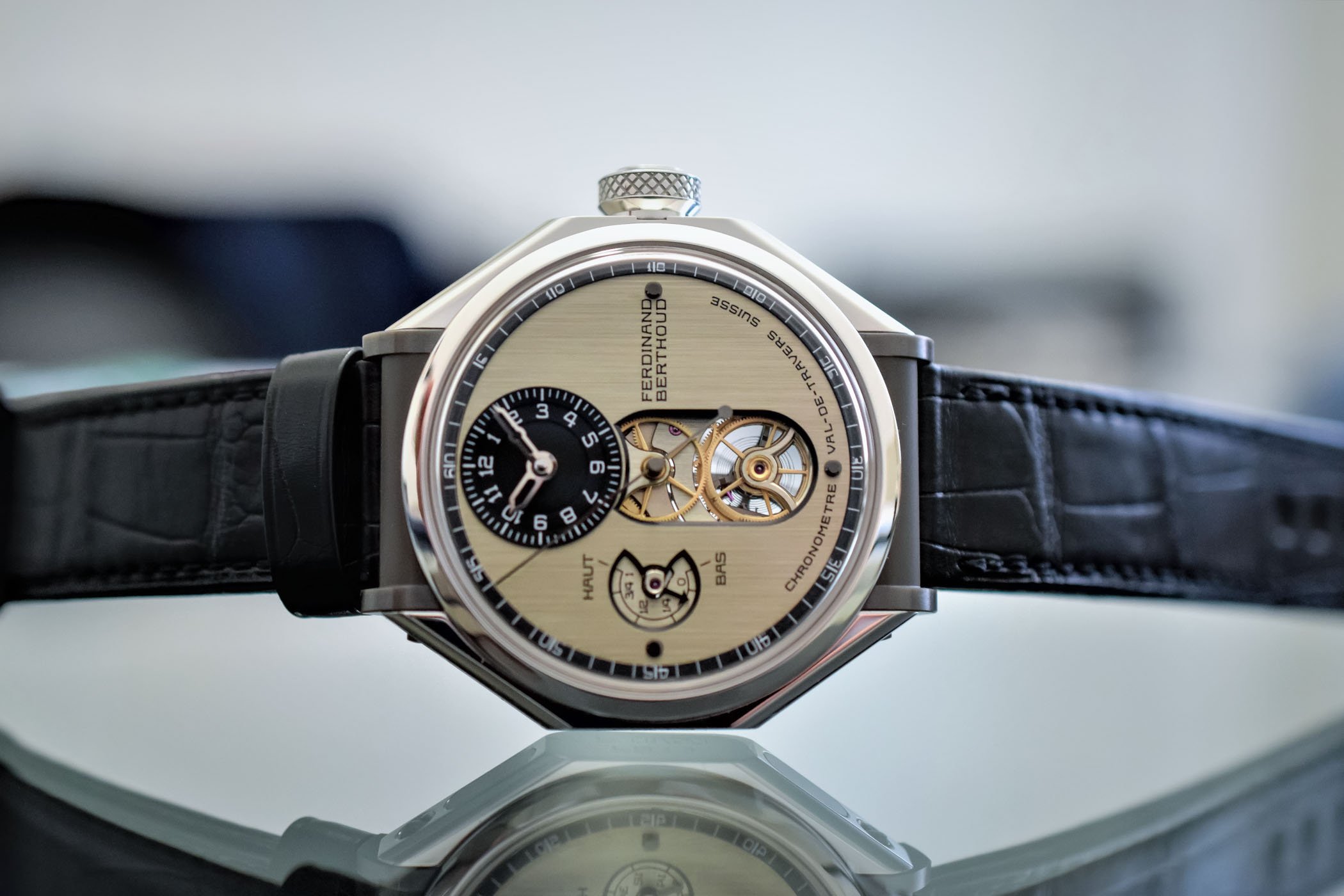
When Karl-Friedrich Scheufele (the co-owner of Chopard) embarked on resurrecting Ferdinand Berthoud, one of the greatest horologists of all times, his ambition was obviously not to release a servile replica of past glories. Distilling and recombining this unique legacy into a personal perspective, the contemporary watches bearing this illustrious name are singular. While displaying an obvious respect for the classics, the Ferdinand Berthoud FB1 is a modern take on this heritage. The result is truly exceptional, crafted and designed with exacting attention to details. The GPHG 2016 Aiguille d’Or award, one of the most (if not the most) meaningful industry accolades is no small achievement. After white and pink gold versions, Ferdinand Berthoud is now releasing a stunning platinum limited edition that premiered at Les Ambassadeurs, in Geneva.
Ferdinand Berthoud – the revival of precision watchmaking
The history of Ferdinand Berthoud goes back to the 18th century, a period of profound and far-reaching developments in time-measurement and science.
Born in Switzerland, Berthoud left an indelible imprint in the history of horology, specifically for his research, creations and development in the field of chronometry. Based in France, his chronometers allowed the country to compete with England and other European countries for supremacy at sea during the age of discovery. At the time, determining longitude was one of the major scientific endeavours. Some of the greatest minds of their time were involved in finding a method to determine the longitude of vessels at sea to provide safe navigation passages. A practical solution came from John Harrison, a carpenter and self-educated clockmaker, who spent decades perfecting accurate clocks. To know longitude at sea, you need to know precisely the time aboard ship and at your home port, to aid in converting the hour differences into geographical separation.
In 1770, following the successful testing of his chronometers NO. 6 (pictured above) and NO. 8, he was awarded the warrant of watch-mechanic to the king and to the navy, receiving a royal commission for 20 pieces. Following the Revolution, in 1795, he was appointed a first-class resident of the mechanical art section of the National Institute. In 1804, Napoléon Bonaparte awarded him the title of Knight of the Legion of Honour. Berthoud is also famed for his numerous writings about horology, translated and reprinted several times in different languages. He wrote several reference articles on the subjects for L’encyclopédie of Diderot and D’Alembert.
The modern Ferdinand Berthoud had to make its debut with a watch celebrating chronometry and precision watchmaking. The result of three years of R&D, its calibre FB-T.FC is truly exceptional.
The movement comprises more than 1,120 parts (including over 790 for the Fusée-and-chain system). Its pillar-type architecture, a nod to the marine chronometers built by Berthoud, is truly spectacular, with some type of sacred feeling. In this temple-like construction, the bridges are secured to the main-plate with titanium pillars, instead of having the plate and bridges screwed tightly together with hollows to support the mechanical elements.
Constant force is a holy grail in watchmaking and chronometry. The waning driving force delivered to the regulating organ of the watch affects the way it performs over the whole power reserve. The period of oscillation is affected by the variation of the driving force delivered by the barrel. This led watchmakers to design mechanisms to compensate for the variations in torque of the mainspring.
A fusée consists of a cone-shaped pulley, linked to a chain coiled around the barrel. The fusée features a spiral thread to receive the chain. Thanks to the increasing circumference of the thread, the diminishing force of the mainspring is compensated (very much like the gearing of a bicycle). As the mainspring unwinds, the chain rolls on the barrel and off the fusée. The increasing leverage of the fusée compensates for the waning torque of the barrel.
Fusée and chain mechanism are complex to manufacture and difficult to adjust. The Ferdinand Berthoud 28 cm chain comprises no less than 474 links, all hand assembled with 300 tiny pins. Its suspended construction (it is secured to the main-plate only) is highly original.
The fusée-and-chain features a Maltese cross stop-work – fitted on the drum of the barrel this gear limits its turn, creating a locking point to prevent any damage from overwinding.
Up-close with the fursée-and-chain mechanism of the FB1 – on the right side, the Maltese cross. In the centre, the superb click spring.
The movement is regulated by a one-minute tourbillon, another device to improve isochronism hence chronometry, counteracting the negative effect of gravity on the way watches keep time. The large tourbillon (16.55 mm for the titanium cage, 12mm for the aerodynamically-shaped variable inertia balance wheel) operates at 3 Hz. The hairspring features a Phillips terminal curve.
It features a direct-drive second. Most often, the one-minute rotation of the tourbillon is used to carry a small-second. The wheel directly connected to the tourbillon carriage and driving the long central second’s hand is visible through a cut-out in the dial. It is reminiscent of marine chronometers and enhances legibility. The power reserve indication is based on a cone-shaped gauge. A cone moves up and down in step with the barrel. A ruby feeler-spindle slides on its surface and drives the dial side indicator.
The decoration of the movement is impressive. To ensure a flawless finish, the brand’s craftsmen check their work under an x10 magnifying glass! Inspired by Berthoud’s work, the slim, long spokes of the wheel are meticulously polished. The bridges are nicely satin-finished and bevelled with straight-grained flanks. The plate and bridges are in maillechort. Some of the jewels are set in finely polished chatons.
The Ferdinand Berthoud FB1 case is elaborate with an octagonal shape and a large fluted crown. 44mm in diameter, it is now fashioned out of the noblest of metals, platinum. It is inspired by marine chronometers and their gimbal suspension. Two angular brancards are screwed to the case middle and hugging a round cylindrical container. 4 lateral portholes provide interesting perspectives on the movement. The domed sapphire crystal is indeed aesthetically pleasing, providing a cool distortion effect when you view it at an angle. Turn the watch over and a sapphire exhibition caseback gives you a front-row view of the superb hand-wound calibre with its tourbillon and constant force mechanism.
The finishing is top-notch with flawless surfaces. The individual limited edition number is engraved on the lateral decorative element. Relevant with the gold editions, the maillechort dial is satin-brushed. It is crafted through a delicate process: a single gesture is performed to brush the dial which requires deft hands. The hours and minutes counter is black lacquered. The recessed counter at 9 o’clock shows the power reserve (haut is for high, bas is for low). It is paired with dagger-shaped hours and minutes hands and a slim central sweep seconds hand with an elegant round counterweight.
Completing the look is a magnificent alligator strap. Not that we would expect anything less from the brand. It is double-sided alligator leather, hand-sewn with rolled-edges. The safety folding buckle is crafted from platinum. It is superbly finished with polished surfaces and perlage. It features a comfort-enhancing extension system that is adjustable within a few seconds.
The Ferdinand Berthoud Chronometre FB1 in Platinum is again a limited edition of 50 pieces, priced at CHF 248,000 / 257,000 EUR / 260,400 USD. More details on www.ferdinandberthoud.ch.
Technical specifications Ferdinand Berthoud FB1 – platinum
- Case: 44 mm x 13 mm – platinum case with 4 sapphire lateral portholes and inter-lugs ceramic inserts – sapphire crystal with anti-reflective coating – sapphire case back with anti-reflective coating – water resistant to 30m.
- Movement: calibre FB-T.FC mechanical with manual winding – 35.50 mm x 7.96 mm – 53h power reserve – 21’600 vibrations/h – 46 jewels – hours, minutes, seconds, power reserve indication – one-minute tourbillon, Fusée-and-chain, Chronometer certified.
- Strap: alligator leather strap with security folding clasp.
- Price: CHF 248,000 / 257,000 EUR / 260,400 USD
- Limited edition: 50 pieces

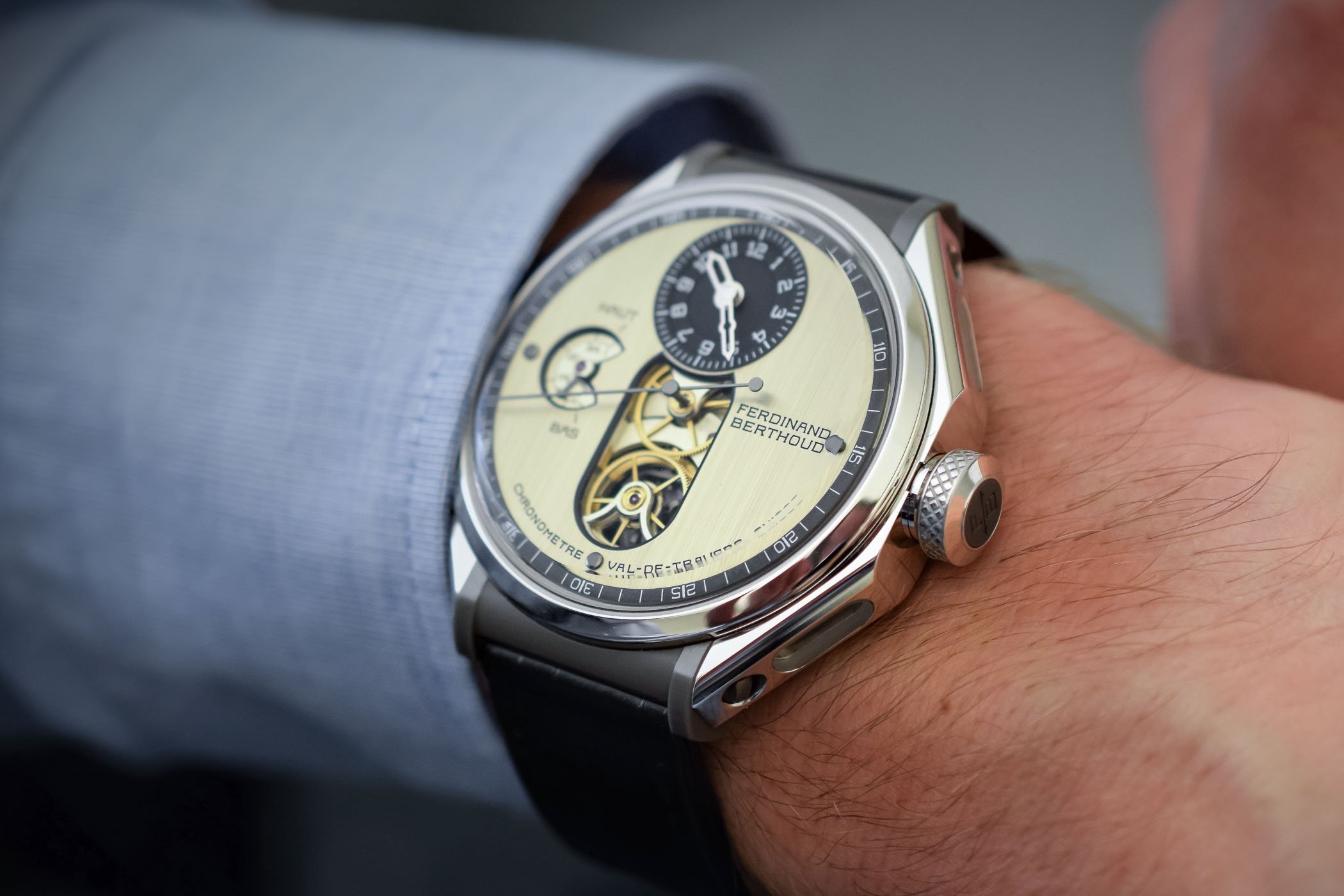
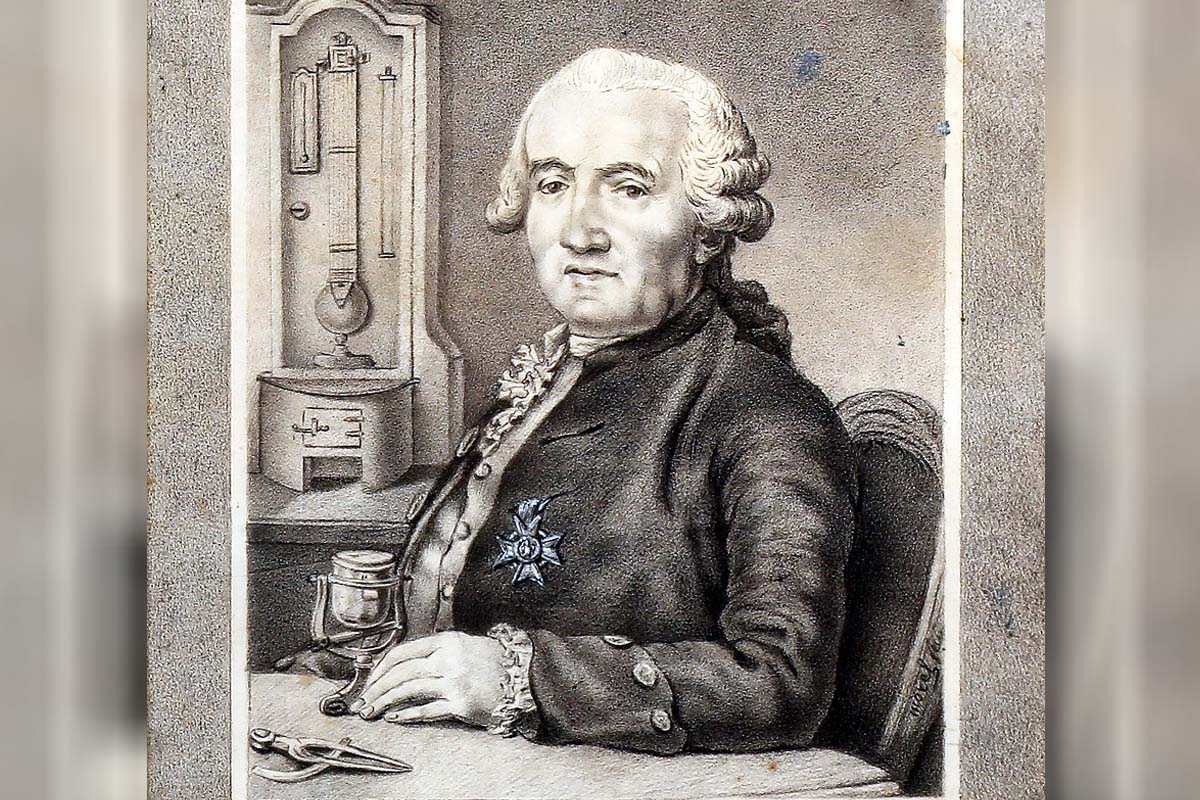
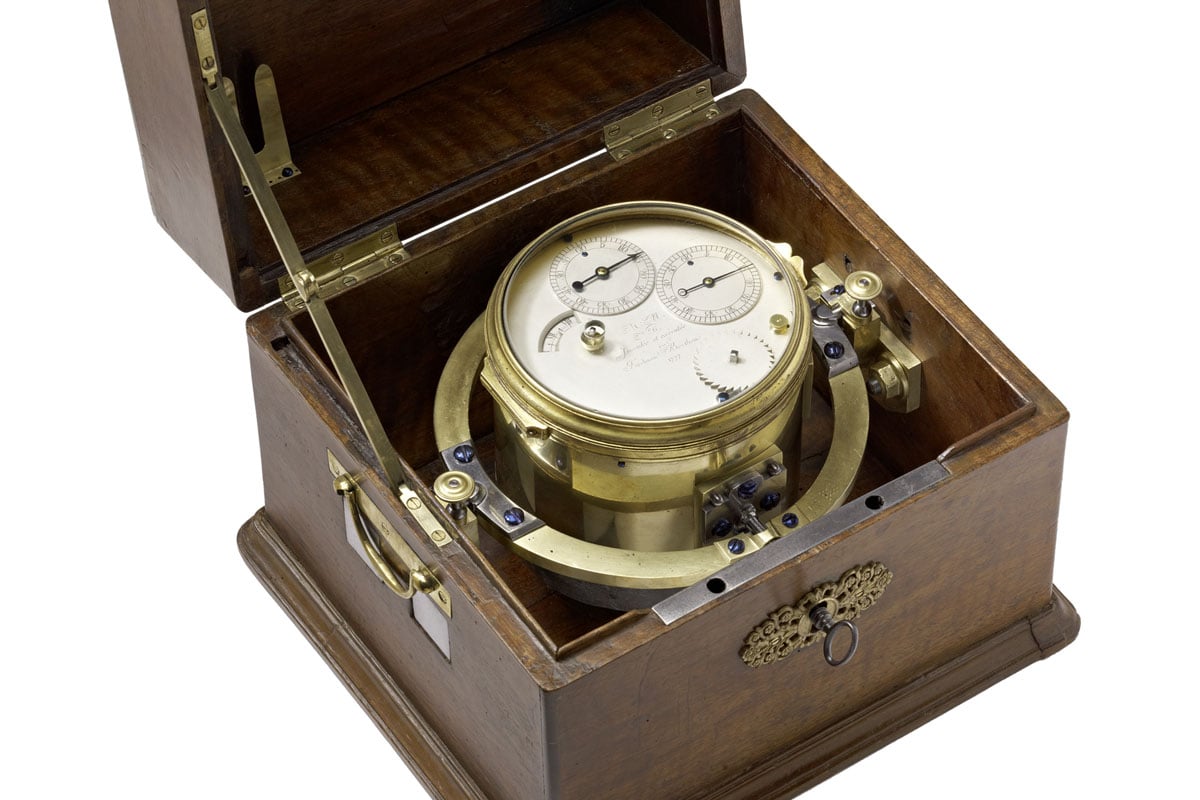
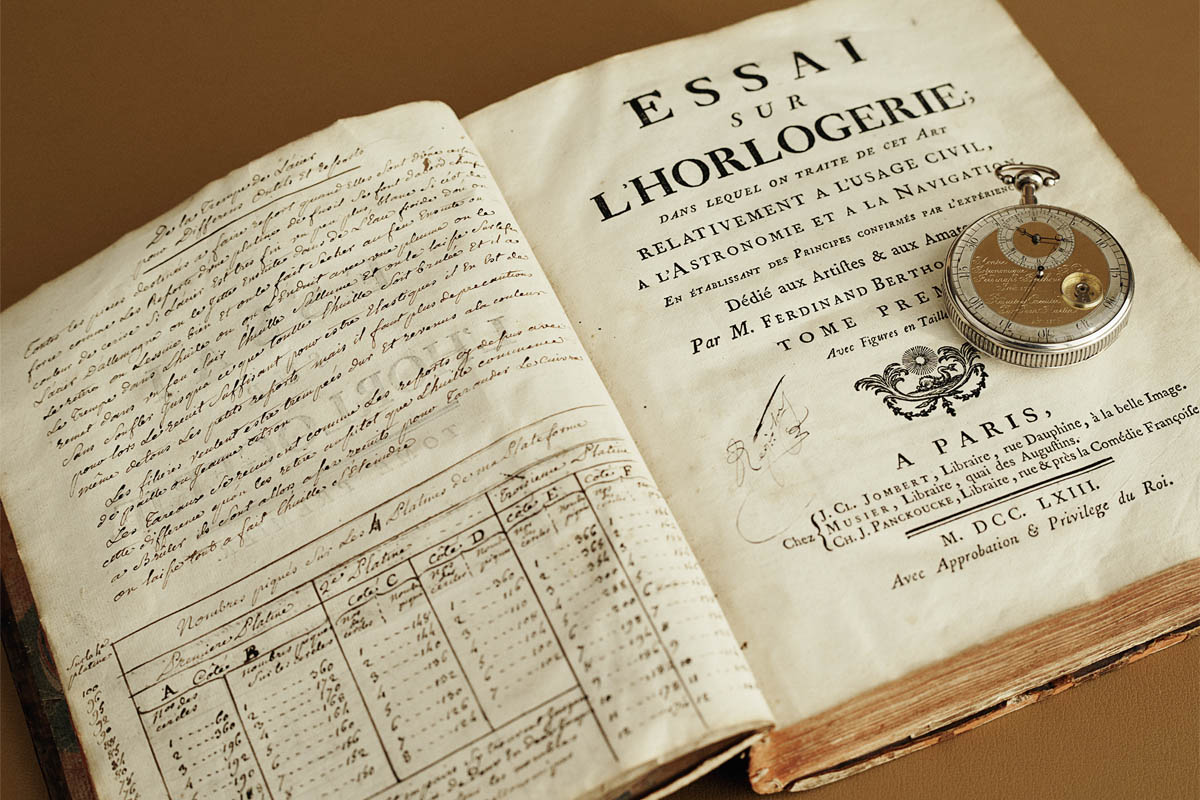
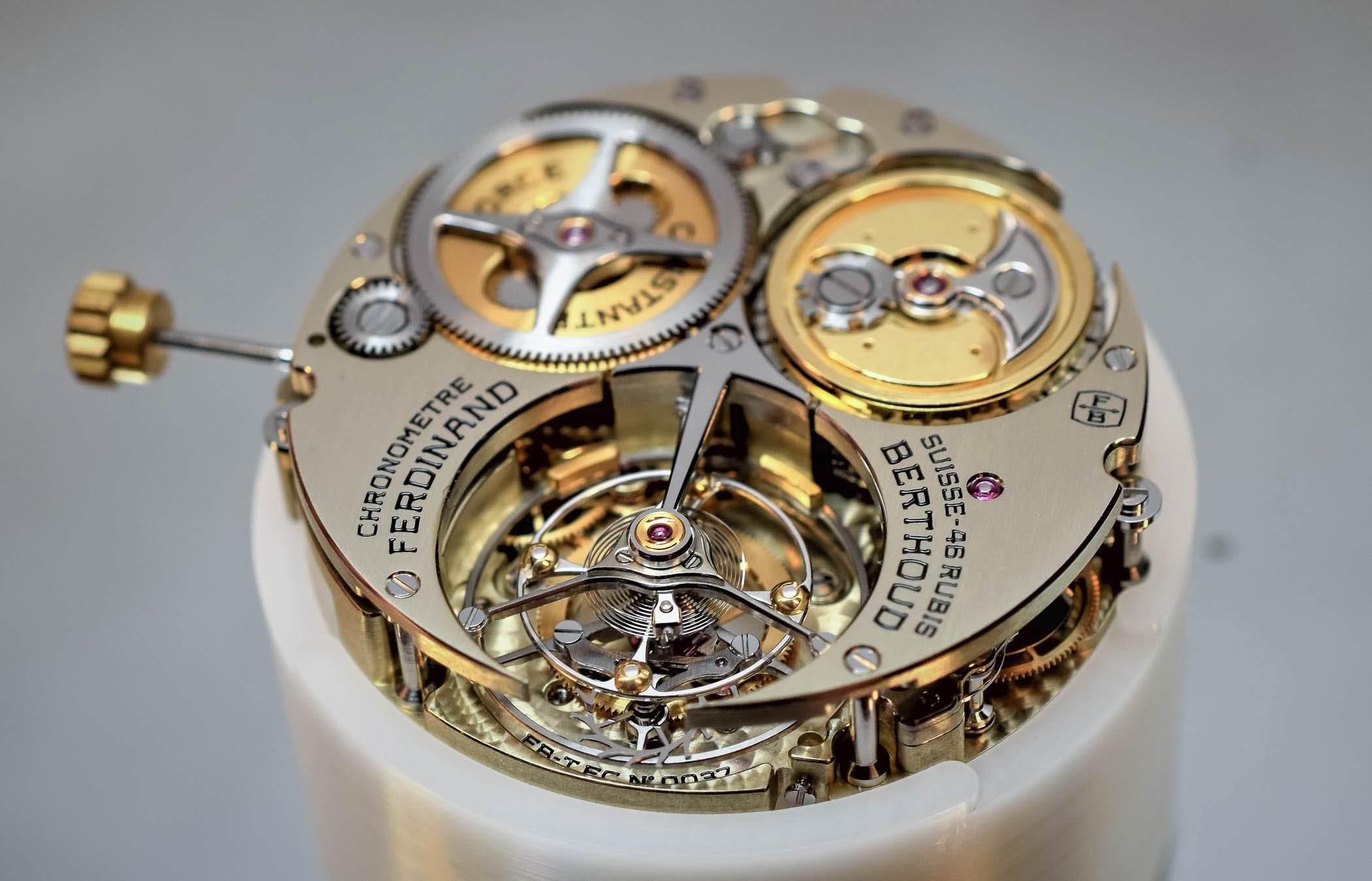
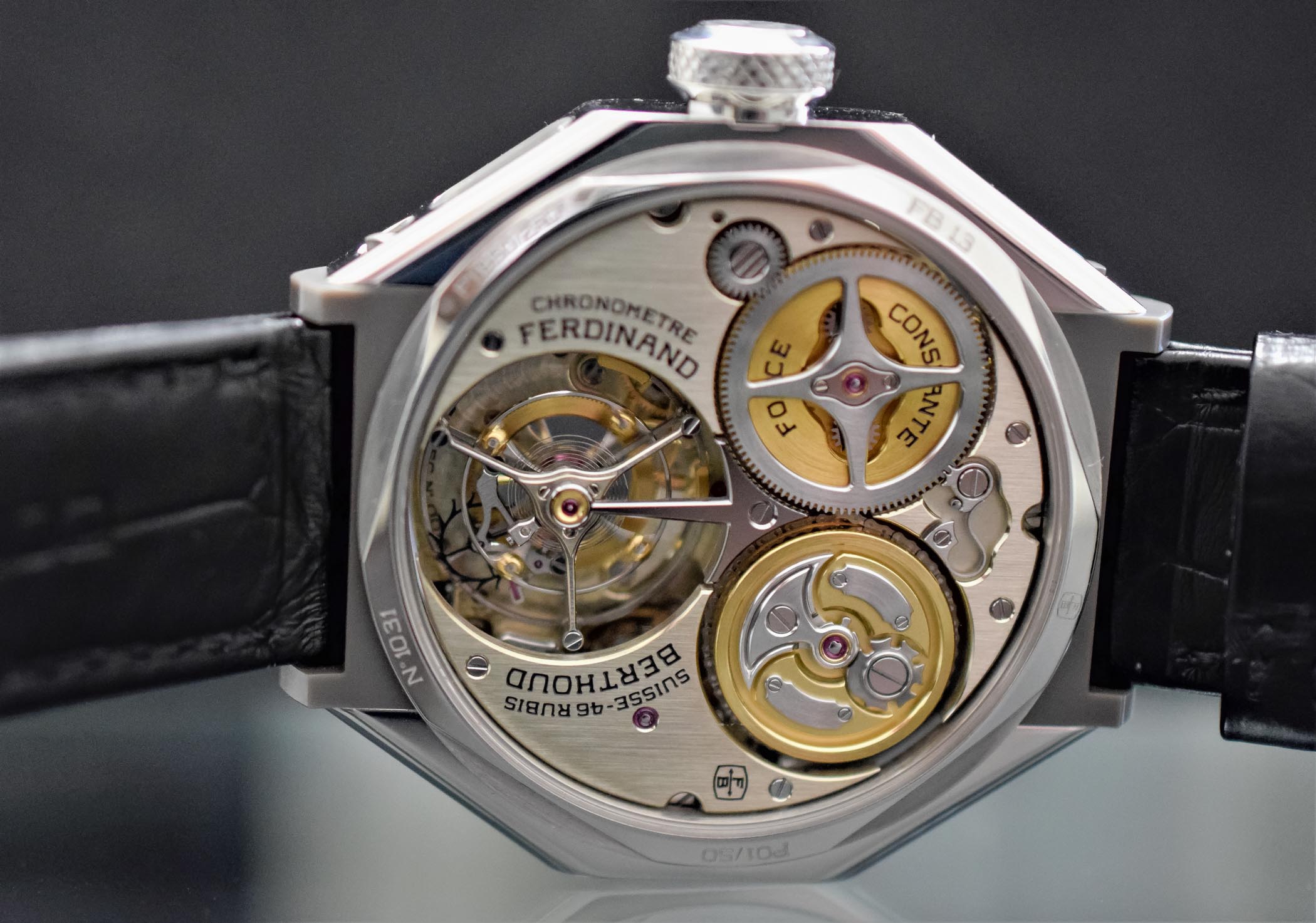

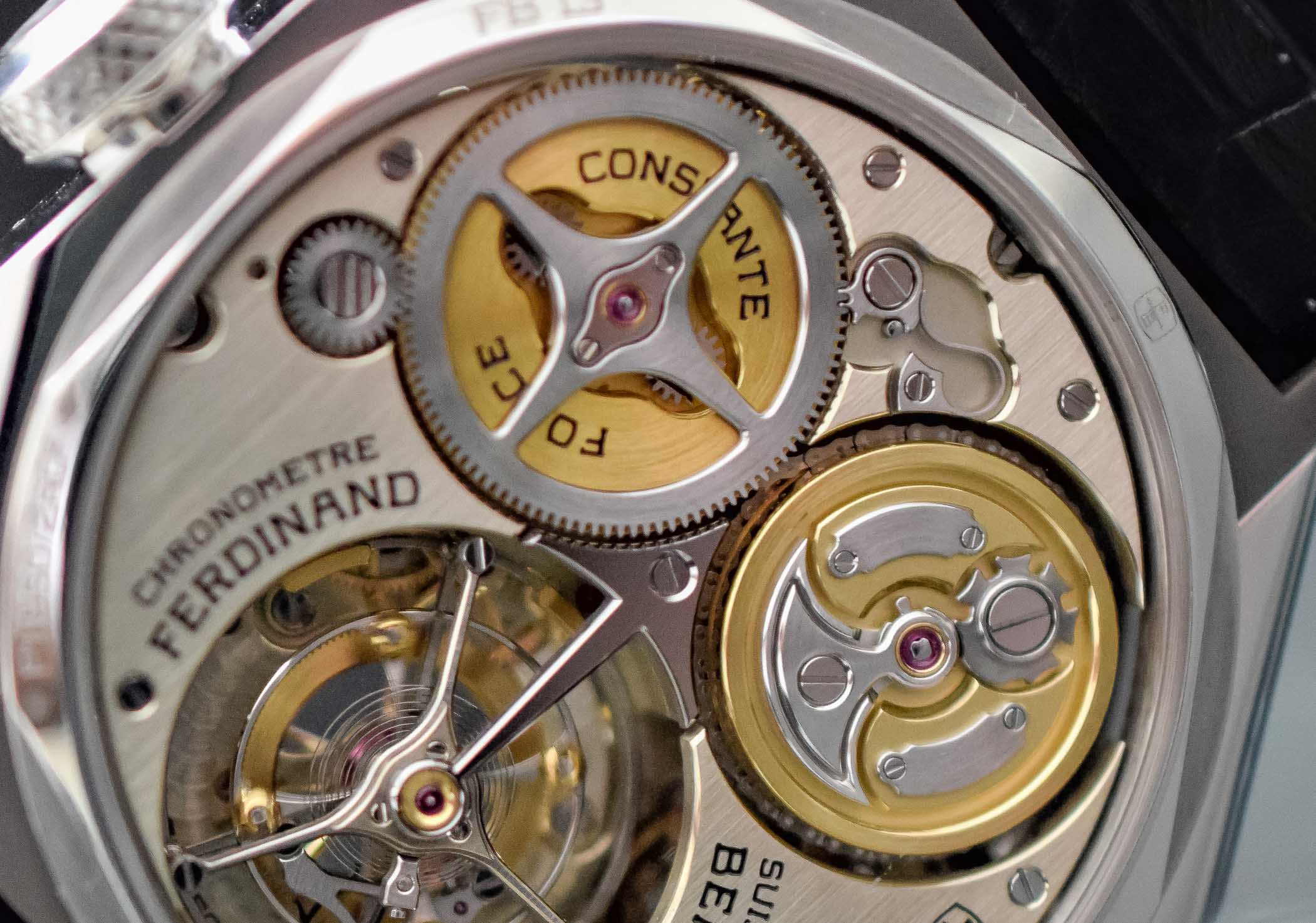
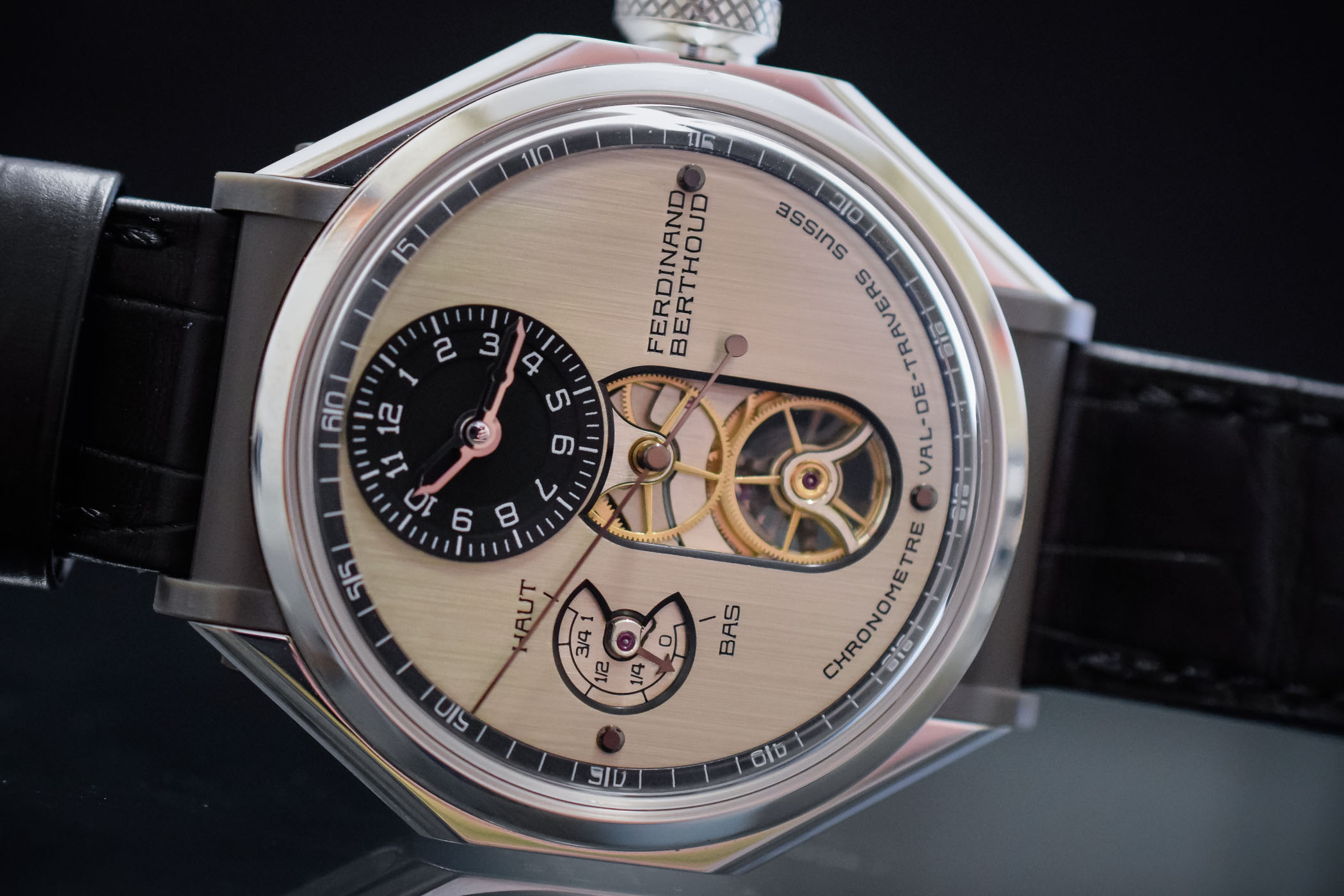
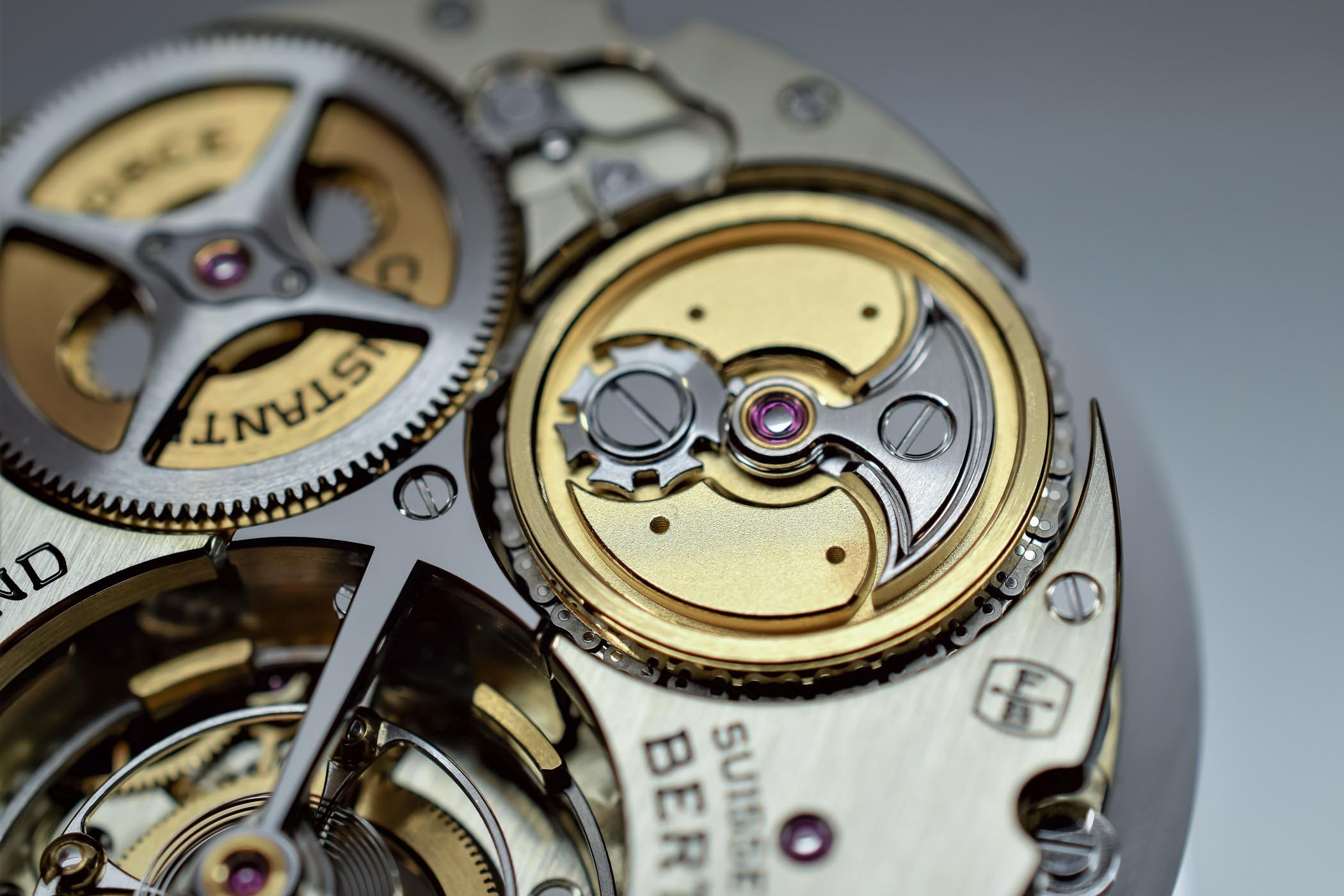
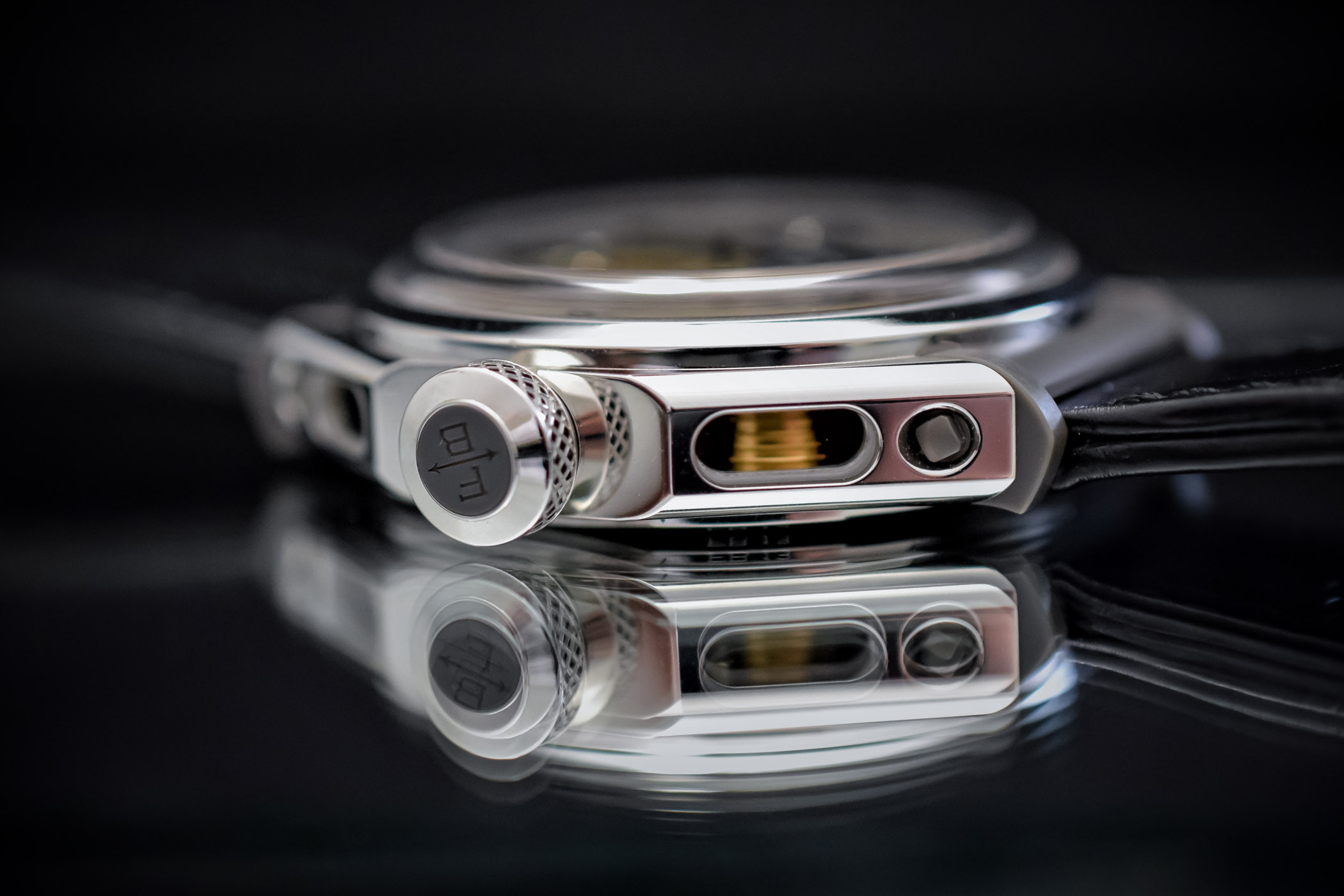
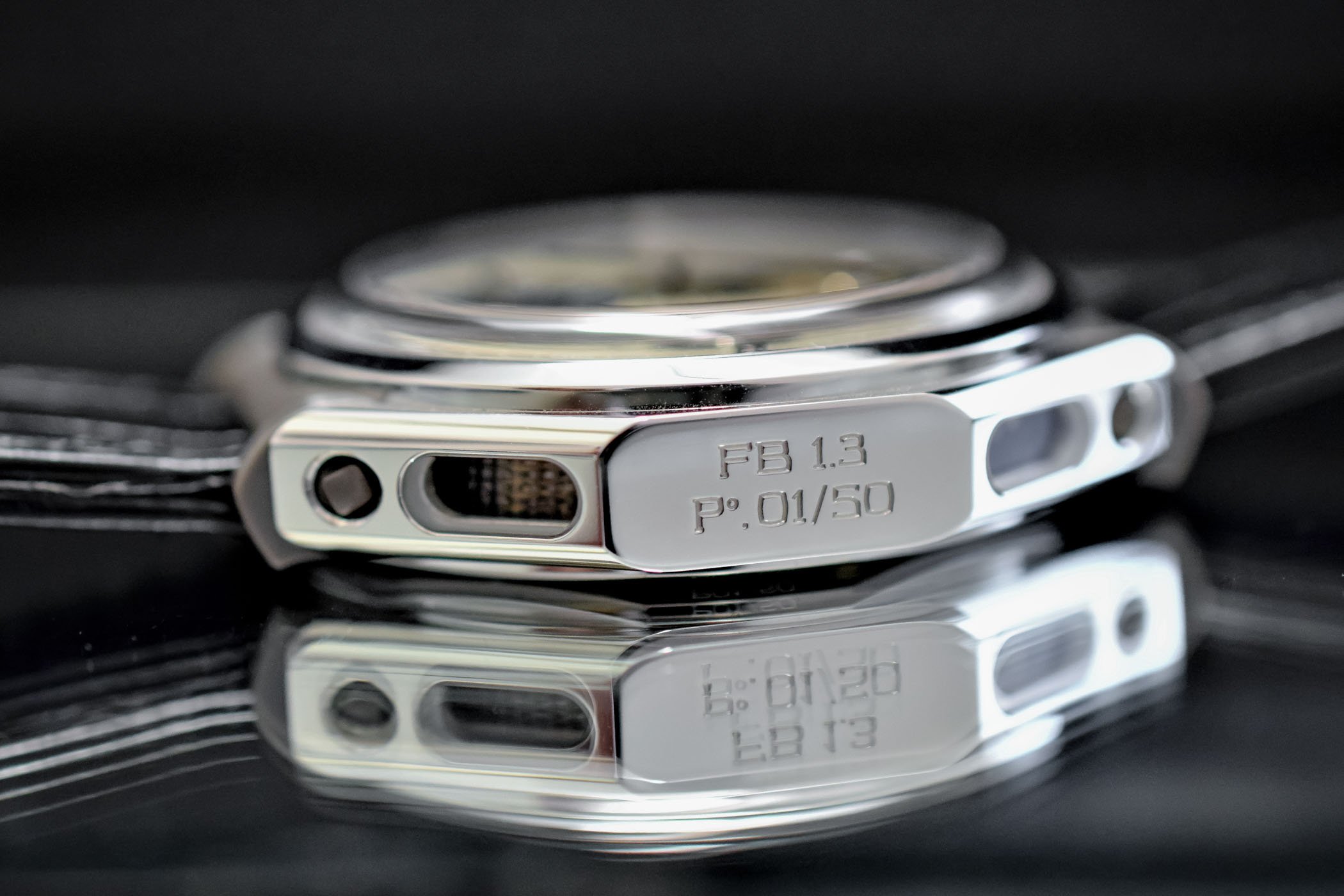
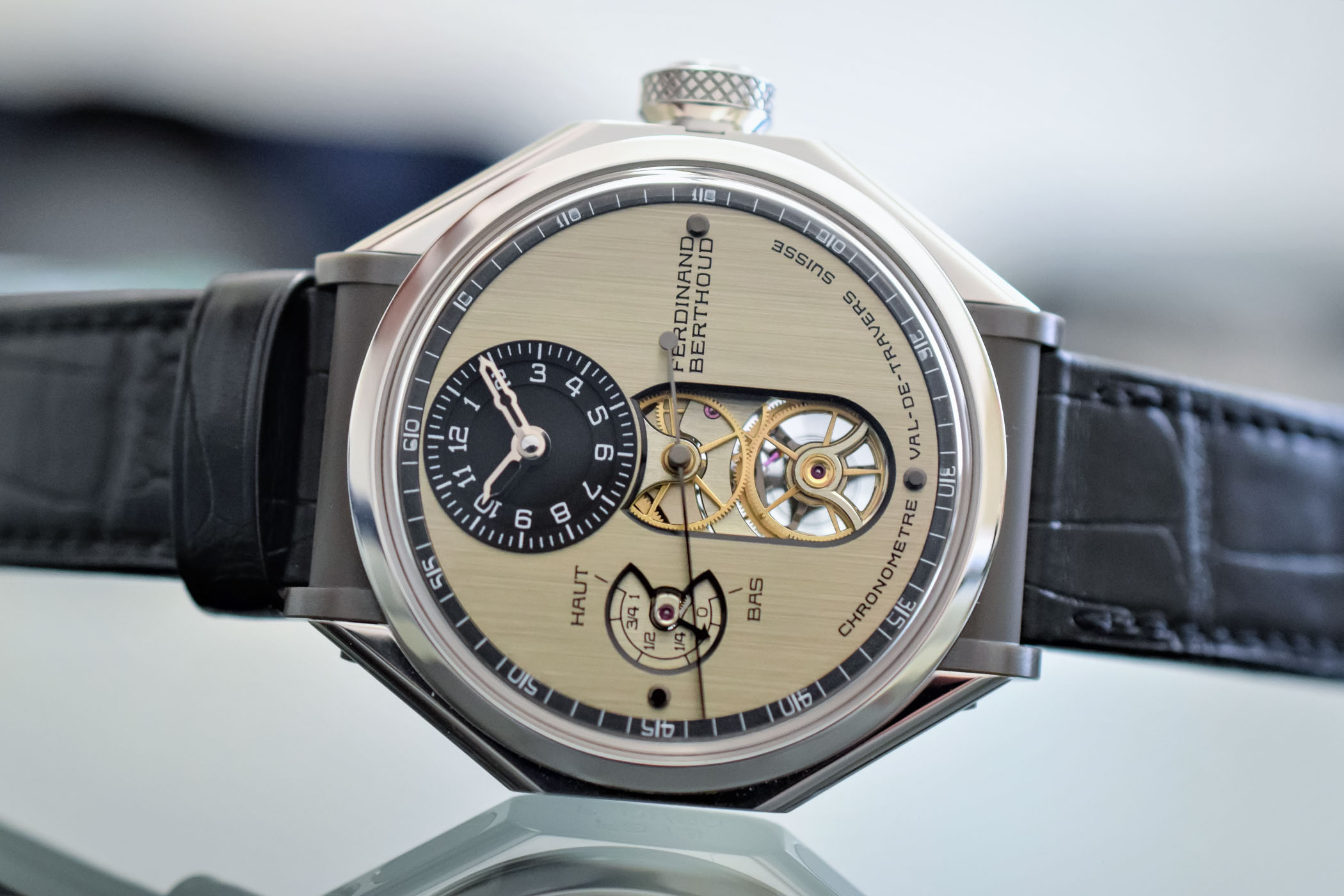




1 response
There is no doubt this is an exquisite timepiece. Whether it appeals to you aesthetically is another matter. I find it impressive on the screen. I am certain it is magnificent in the hand. But I really would like to know what on Earth is happening between those lugs. It looks like two pieces from Fisher-Price have been stuck onto the strap!